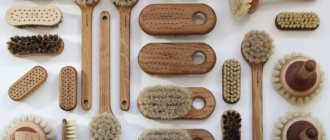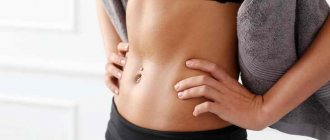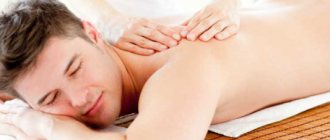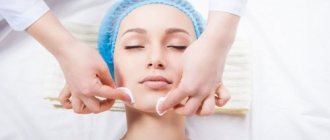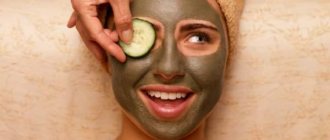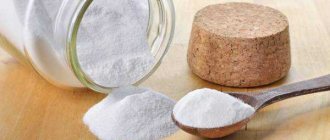Massage for weight loss is effective because it activates metabolic processes, blood circulation and lymph flow. According to some studies, fat capsules in the subcutaneous tissue are ruptured during the procedure. As a result, the process of lipolysis is accelerated. In combination with proper nutrition and exercise, the procedure helps to get rid of extra pounds, makes the figure more toned, improves overall well-being, and reduces psycho-emotional stress.
Mechanism of action
The action of massage is based on mechanical irritation of tissues. The impact on the body is carried out using hands or devices. The therapeutic effect is achieved through movement and compression of tissues, due to changes in the movement of intercellular fluid, blood, and lymph.
Types of effects on the body during massage:
- Humoral. In the process, biologically active substances are released, which then enter tissues and organs.
- Nervous-reflex. During the session, nerve receptors are irritated. The resulting impulses are sent to the brain, where they are transformed into a single reaction. As a result, the functioning of the body changes.
- Mechanical. The specialist displaces, pushes, and stretches the tissue. Because of this, stagnation is eliminated and the circulation of fluids improves.
Leg slimming massage. Is foot self-massage effective for weight loss?
The procedure is a set of mechanical effects that a person performs on his body. The effect of self-massage is similar to that of a regular massage. The only difference is who is conducting the session. In the process, dead epidermal cells are also removed, skin respiration, blood circulation, and lymphatic drainage are improved. Massage for losing weight on legs and thighs is needed to reduce body fat and get rid of cellulite.
Benefits for the body
The procedure helps you relax, let go of negative thoughts, relieve pain, relieve tension and achieve weight loss. By performing the steps yourself, you will avoid unnecessary expenses and will be able to conduct the session at any convenient time. Self-massage brings the following benefits to the body:
- restores physical strength;
- relaxes muscles;
- relieves fatigue;
- has a beneficial effect on the central nervous system;
- improves blood flow to the skin;
- increases the outflow of lymph and venous blood;
- removes waste and toxins;
- eliminates stagnation;
- speeds up metabolism;
- improves the appearance of the skin: makes it elastic and smooth.
Weight loss occurs due to the removal of excess fluid and toxins from the subcutaneous layer. The mechanical effect on the epidermis increases blood circulation and lymphatic drainage, thereby accelerating metabolism. Tissues are saturated with oxygen and nutrients, and more readily release half-life products. All these processes require additional energy, which is taken from fatty tissue. The percentage of lipid mass burned is small, but the overall weight loss effect is worth the effort. The improvement is noticeable after 3-4 sessions.
Techniques
When self-massaging your legs for weight loss, you should not make chaotic movements. Inept actions will negatively affect the condition of the veins, injure the skin, and will not bring a positive result in weight loss. During the procedure, use the following techniques:
- Stroking. Self-massage begins and ends with it. Stroking is performed when moving from one technique to another. It is produced with the palm of the hand, the back of the hand, and the pads of the fingers. The technique prepares the epidermis for massage and soothes it at the end of the session. Stroking has a relaxing effect on the nervous system and promotes skin renewal.
- Squeezing. Using the pads of the fingers, the entire palm or its edge, pressure is applied to different parts of the legs. At the same time, the hands move quickly. Due to such movements, self-massage affects deep tissues: subcutaneous tissue, connective tissue, superficial layer of muscles. The intake activates blood circulation, relieves swelling, and tones the body.
- Kneading. This is the main technique for self-massage of muscles. The technique is not easy; beginners can master ordinary kneading (with one hand). Reception activates redox processes, affects blood vessels and bones. It is a passive exercise for muscles.
- Trituration. It can be superficial and deep. The first type is performed with the pads of the fingers - they need to be made in circular or linear movements without leaving the skin. Deep rubbing is done with the thumbs, the back of the fist, and the base of the palm. The trajectory of movements is up and down, zigzag. Reception increases the local temperature, promotes the resorption of hardening and deposits, eliminates cellulite, and increases the elasticity of ligaments.
- Shaking. It is carried out only on the legs and arms. The fingers grab an area of the body and make a movement reminiscent of sifting flour through a sieve. The technique is used after kneading to relieve muscle tension, uniform distribution of fluid in tissues and blood outflow.
- Tapping and patting. Use your palm, elbow or fist to slap the skin. The technique is suitable for self-massage of large muscle groups. You should not use it on the inner thighs if your muscles are very tired.
Advantages and disadvantages
Benefits of massage:
- Improving blood circulation. Thanks to this, metabolic processes are normalized. Due to the massage, more blood flows to the tissues. As a result, the body gets rid of waste products that are generated during metabolism.
- Increased skin tone. The procedure has a beneficial effect on the condition of the figure. It improves overall skin tone and reduces the appearance of cellulite.
- Improving muscle range of motion and flexibility. This will help maintain peak performance during physical activity, resulting in more calories being burned. Improving range of motion and muscle flexibility helps reduce pain during the recovery period. It also reduces the risk of injury.
- Combating psycho-emotional stress. Many people tend to gain weight when they are under stress. Against this background, they begin to overeat. This leads to weight gain. Massage helps you relax and reduce the risk of impulsive overeating.
- Improved digestion. Abdominal massage helps improve the functioning of the gastrointestinal tract and get rid of constipation. With poor digestion, a person feels bloated. Massaging the area above the stomach helps solve this problem. As a result, the volume of the abdomen decreases and a feeling of lightness appears.
With the help of massage you can tighten the skin.
The main disadvantages include:
- painful sensations when massaging the body;
- the need for an integrated approach to weight loss (diet, exercise);
- formation of hematomas.
Decide on the problem area: legs and hips, stomach and sides, arms
In many ways, the choice of a specific type of massage for burning fat depends on the area requiring correction. Thus, we can identify several areas in which fat deposits are most often formed. Problem areas include: hips, legs in the inner area, arms in the shoulder area, stomach and of course the sides. Each of these zones is characterized by certain signs indicating excessive deposition of subcutaneous fat.
First of all, you should pay attention to the elasticity of the skin - the lower its turgor, the more effort must be made to burn fat. If you lightly pinch and pull the skin in the problem area, you can feel the thickness of the fat layer by touch - this will allow you to choose a personal strategy for losing weight. Another sign that indicates that it is necessary to implement local measures is cellulite. It is worth noting that such a problem can arise not only with excessive fat accumulation, thin people also face it.
The most potentially cellulite-prone areas are the butt, stomach and legs. In this case, the process of outflow and circulation of fluid, including lymph, is disrupted in the subcutaneous layers. The problem manifests itself in the form of changes in the structure of the skin, it becomes lumpy and inelastic. In this case, it is necessary to ensure normal lymph outflow through massage, destroying the resulting plugs.
Contraindications
The procedure is considered safe. However, before it is carried out, the condition of the body should be assessed. Some people are not advised to have massage due to health concerns.
Contraindications are:
- cardiovascular diseases;
- high blood pressure;
- skin infections;
- inflammatory process;
- fever;
- renal failure;
- thrombophlebitis;
- problems with blood clotting;
- open tuberculosis;
- malignant neoplasms.
Pregnant women, people who have undergone surgery or suffer from rheumatoid arthritis should consult a doctor before any massage. The procedure must be carried out by an experienced specialist, since any incorrect movement can lead to serious health consequences.
Is it possible to lose weight with massage?
Despite the fact that massage has a fat-burning effect, it is only part of the weight correction measures along with a balanced diet and a sufficient degree of physical activity.
Many fitness instructors recommend visiting a massage room after training to remove waste products and lactic acid accumulated during periods of increased stress from muscle tissue.
Some massage techniques can lead to a decrease in volume by several centimeters, but this is usually due to a decrease in swelling, and not due to the breakdown of the fat layer. Without proper physical activity and diet, the previous volumes quickly return.
Efficiency
Massage will help you relax
Massage stimulates natural regenerative processes in the body, relieves muscle tension, and activates the immune system. The procedure also affects the psycho-emotional state. Thanks to it, anxiety is reduced. The procedure promotes:
- acceleration of enzymatic processes and metabolism;
- increasing skin turgor;
- removal of metabolic products.
The effectiveness of a massage depends on its type, the intensity of the specialist’s movements, and the duration of the sessions.
Types of massage
There are several types of procedure. Each of them has its own technique of execution and has a different effect on the body. The body is kneaded with the help of hands, apparatus, and additional devices.
Hardware techniques
During it, the body is exposed to vibration, vacuum, and ultrasonic effects. The main advantage of hardware massage is deeper tissue development.
Ultrasonic cavitation
It is a non-surgical alternative to liposuction. Used for contour correction of the required part of the body.
During cavitation, low-frequency sound waves are applied to problem areas. They activate lipolysis. The layer of fat cells located under the skin heats up and vibrates. As a result of the applied pressure, their contents are liquefied and released into the bloodstream.
Ultrasonic cavitation diagram
To achieve best results, 10–12 procedures are necessary. After 5 sessions, the volumes are reduced by 2–5 cm. Each procedure lasts 30–50 minutes.
Effects of cavitation:
- skin tightening and cellulite reduction due to the synthesis of new collagen and elastin fibers;
- toned body contours;
- reduction in volumes.
To obtain maximum results before and after cavitation, you must drink at least 1.5 liters of water. The day before, you should follow a low-calorie diet with little carbohydrate content.
Ultrasonic cavitation does not destroy fat cells. It helps release their contents. Therefore, cells in the affected area are able to accumulate fat again.
Pressotherapy
During the procedure, compressed air is applied to various parts of the body. Because of this, blood circulation and lymph circulation are activated.
Pressotherapy is an alternative to manual lymphatic drainage massage. During the procedure, compressed air is supplied through a device with a compressor to the cuffs worn on the body. As a result, pressure begins to be exerted on the body.
The procedure lasts 20–40 minutes. A total of 8 sessions are recommended. Results appear after 4-5 procedures.
Pressotherapy helps restore skin elasticity by increasing the flow of oxygen to body tissues. Because of this, the body looks more toned.
Pressotherapy has a number of contraindications. These include:
- pregnancy;
- vein thrombosis;
- infections in the affected area;
- malignant neoplasms;
- heart disease and the presence of a pacemaker.
Pressotherapy is recommended before and after liposuction. It prepares the body for surgery and helps it recover after it.
LPG massage
LPG endermology (lipomassage) is a non-invasive procedure that helps reduce volume in problem areas, eliminate cellulite, and increase skin elasticity. It is recommended not only during weight loss, but also after liposuction and for people who have already lost weight.
The procedure is carried out using a sensor-handle connected to the device. There is no direct contact with skin. You must first put on a suit that allows the manipulator to slide over the body. During the session, the skin fold is absorbed by the sensor thanks to the vacuum and processed by rotating rollers. Thanks to lipomassage, cellular activity increases and lipolysis accelerates. This occurs against the backdrop of increased blood flow and oxygen to problem areas.
The session lasts 25–40 minutes. After 6 procedures, the quality of the skin improves, and cellulite becomes less pronounced. In order for the contours of the body to be more toned, it is necessary to complete 8 sessions. Up to 3 procedures are allowed per week.
Effect of lipomassage:
- acceleration of weight loss;
- smoothing the skin, increasing its elasticity;
- body detox;
- reduction in body volume.
Contraindications for lipomassage:
- pregnancy;
- infections;
- blood diseases;
- oncology;
- AIDS.
On the day of the massage, you should drink up to 8 glasses of water. This will help prevent dehydration. Lipomassage has few side effects. At the first stage, when the manipulator is applied to the skin, slight painful sensations may occur. People with thin sensitive skin experience bruising after lipomassage.
Vacuum massage
It is performed by hardware and using cans. In the first case, the subcutaneous tissue is exposed to the nozzle. Massage movements can be circular, straight, zigzag. It is not recommended to massage the inner thighs and abdomen. The nozzle should be moved in the direction of lymph flow.
After the first session of vacuum massage, due to improved lymph and blood circulation, you feel light. Some people experience pain the next day. After 5–6 sessions, skin turgor improves. After 7–10 procedures, the volumes are reduced. The number of sessions is selected taking into account individual factors.
Hydromassage
During this procedure, the body is massaged with warm water supplied under high pressure. Its jets are more powerful than those produced in a jacuzzi.
Traditionally, the procedure is carried out with complete immersion in water. However, there are massage blocks in which the body does not come into contact with the liquid.
Water pressure stimulates blood and lymph circulation. Due to hydromassage, the skin becomes more toned and cellulite is reduced. The procedure helps reduce mental stress, as the production of cortisol and other hormones associated with stress decreases. This is important for those who are losing weight, since losing weight in a normal psycho-emotional state becomes easier.
Water pressure and temperature are selected individually. Hot hydromassage is performed to relax muscles and improve blood circulation. You can improve skin and muscle tone with cool water.
You should consult your doctor before undergoing the procedure in the following cases:
- heart diseases;
- pregnancy;
- postoperative period;
- recovery from injury;
- hypertension.
Before hydromassage, you should not drink alcohol or eat heavily.
Manual
There are many types of manual massage. During it, the specialist uses different techniques (lightly stroking the body, pressing local areas). Types of manual massage used for weight loss:
- Lymphatic drainage. Helps improve lymph circulation and drainage of excess lymph fluid. This body massage is the most effective for correcting problem areas on the arms and legs. It helps remove swelling. Due to this, the volume of problem areas is reduced. During the procedure, the body is massaged in waves towards the lymph nodes.
- Anti-cellulite. The effect is achieved by eliminating congestion, improving blood circulation in problem areas, and activating the synthesis of collagen and elastin. The specialist presses the body locally, collecting the skin into a roller. He can also use other techniques (vibration, stroking).
- Self-massage. It is performed from bottom to top in the direction of lymph flow. Skin lubricated with cream in problem areas should be grabbed into folds and moved.
Hydromassage promises elastic skin
Lie in a warm bath and lose weight at the same time? An underwater shower massage promises such miracles. A specialist uses a special device from which water is supplied under pressure to massage problem areas. This method allows you to painlessly work even deep muscle layers. Underwater abdominal massage for weight loss will help you get rid of fat deposits and get the desired body shape.
To achieve maximum effect, medicinal herbs, aromatic oils, and sea salt are added to the water, after which the skin becomes smooth and silky to the touch.
The procedure lasts from 15 to 60 minutes (depending on the selected treatment area), after which it is recommended to rest and drink hot tea. And if you do a body wrap after a hydromassage, you can get rid of cellulite faster.
Result: skin elasticity increases, its blood supply increases, and rejuvenation occurs. The course consists of 10–15 procedures.
Average cost: from 400 rubles.
General principles
The following techniques are used for manual massage:
- Stroking. The specialist slides his hands over the skin without catching it in folds. At the same time, he produces pressure of varying degrees of intensity. Stroking helps muscles relax, accelerates blood flow, and increases the elasticity of the epidermis. They are performed at the beginning and end of the session, after deep tissue treatment.
- Kneading. During them, the massage therapist pulls, squeezes, and grabs the skin and tissue. The main effect is on the muscles and subcutaneous tissue. Kneading can be longitudinal or transverse. It takes half the session to complete them.
- Trituration. The specialist stretches and moves the skin. Movements are made in different directions. Rubbing helps eliminate swelling and normalize lymph circulation. The effect is achieved through a deep effect on the tissue. Movements are made by the fingers, palm and its base. The body is rubbed in a spiral, in circles, in a straight line.
- Vibration. Can be shock or continuous. The body is massaged with fists, the edge of the palm, and bent fingers. Movements can be targeted, chopped, in the form of patting, wiggling.
During the procedure it is prohibited:
- massage the lymph nodes;
- take breaks between doses;
- massage the body not along the lymph flow.
Rules for performing massage at home
The technique of anti-cellulite massage at home, including general rules, takes into account the peculiarities of its implementation in different areas. It consists of the following:
- For better gliding of hands, use anti-cellulite cream or diluted oil of juniper, cypress, orange or lemon.
- It is necessary to begin massage movements slowly, gently, gradually increasing the tempo and force of influence. You should also finish with superficial relaxing movements.
- Massage movements should be strong, but such that the skin acquires a pink (not red) color.
- You cannot exert strong physical impact in the area of nerve trunks, vascular and nerve plexuses, in places where lymph nodes are localized - supraclavicular, axillary, inguinal, popliteal areas and the inner surface of the thigh.
- Massage should be carried out in the direction of the outflow of blood and lymph. For the arms and chest - this is the axillary area, for the abdomen, hips and lumbar area - the groin area, for the legs - the popliteal fossa.
Reviews
Irina, 35 years old, Voronezh: “I tried to reduce the volume of my body using cavitation. I alternated the procedure with honey wraps. The first massage sessions went well. The skin became smoother, the waist and buttocks decreased by 1 cm. However, after the 4th procedure, throbbing pain appeared, weakness, and arrhythmia appeared. I had to give up cavitation.”
Marina, 28 years old, Sochi: “I recommend getting LPG massage from experienced specialists to avoid pain and bruises. I consider the procedure effective for weight loss. In 2 courses of LPG we managed to lose 9 kg.”
Anna, 33 years old, Moscow: “Pressotherapy did not help remove fat deposits. After 6 sessions, the weight decreased slightly. However, this happened due to the removal of excess fluid from the body.”
How to prepare for an anti-cellulite massage procedure?
Preparatory procedures begin 2 weeks before the course. Preparation begins with cleansing the body.
To do this, exclude:
- cigarettes;
- strong tea and coffee;
- alcohol;
- sweetener and artificial colors;
- meat and sausage products;
- milk.
Include in menu:
- fish;
- fruits;
- salads seasoned with vegetable oil;
- fresh juices;
- walnuts.
5-6 days before the sessions, the menu should contain:
- vegetables;
- lean meat;
- fish;
- skim cheese;
- fruits;
- fresh juices.
Drink at least 2 liters of non-carbonated mineral water per day. Increase physical activity. Sea salt baths and scrubs will prepare the skin. It is useful to cleanse the skin before and during the course.



